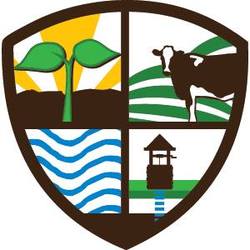
Cover crop interseeding has numerous benefits for farmland soil, and those in attendance at Peninsula Pride Farms’ (PPF) third Conservation Conversation of the summer on Sept. 2 walked away with a better understanding of what cover crop mixes to choose.
Matt and Craig Oehmichen from Short Lane Ag Supply in Colby, Wis., gave an hour-long presentation to nearly 30 people, the largest group to attend a PFF Conservation Conversation this year, to discuss in detail the dos and don’ts of interseeding.
The brothers went in depth about how interseeding a cover crop is a symbiotic relationship with the harvesting crop in the soil. They also displayed various cover crop plants that were planted in Brey Cycle Farms’ corn field adjacent to the gathering, including seven top turnip, daikon radish and crimson clover.
“We have to remember there isn’t one thing that stands out with a cover crop, because it’s about the entire ecosystem,” Matt Oehmichen said. “Cover crops help soil biology, worms and other insects and moving nutrients up and down in the soil."
Participants were shown a slide that demonstrated a field with various rows of cover crops. In the first six rows, there was only one species planted, then one row of three seeds mixed, one row with five and a row with an eight-seed mix. It was proven that at least a five-seed mix is needed to have a beneficial cover crop for the soil and the harvesting crop. The rows with a single seed planted washed away in the rain.
“This was our first year using interseeding on a field that was no-till corn after triticale was harvested in early June,” Jacob Brey said. “One benefit we have seen in our field is increased water retention and building organic matter. The field we planted the cover crop on has shallow depth to bedrock. What we are trying to do here, because we are not able to apply manure, is build organic matter and increase the soil health.”
Interseeding into a corn crop was discussed at length. The best time to plant was when the corn was at a V2 or V3 growth stage. Different application methods of a cover crop depend on the individual farm, and the soil structure varies immensely from farm to farm. Oehmichen said it is more important to be concerned with root mass than what is growing on top because of the organic matter that is created.

